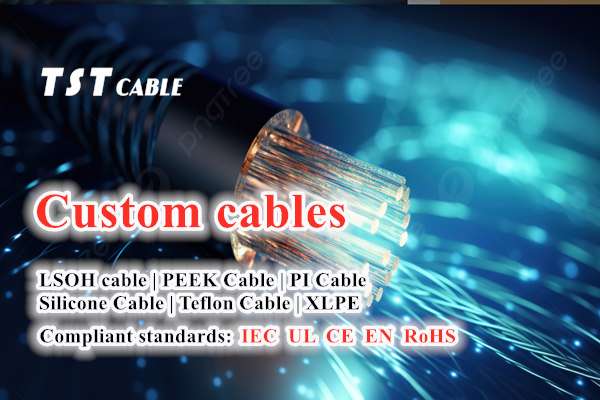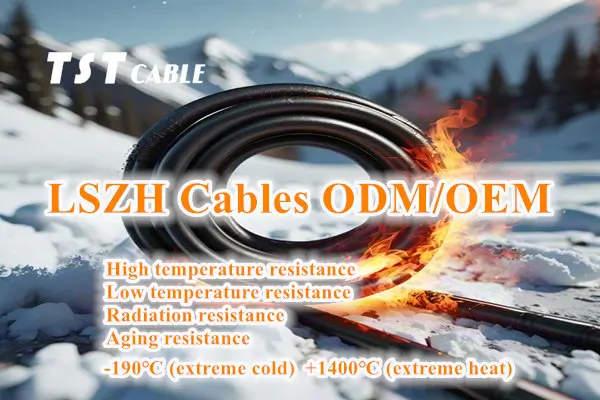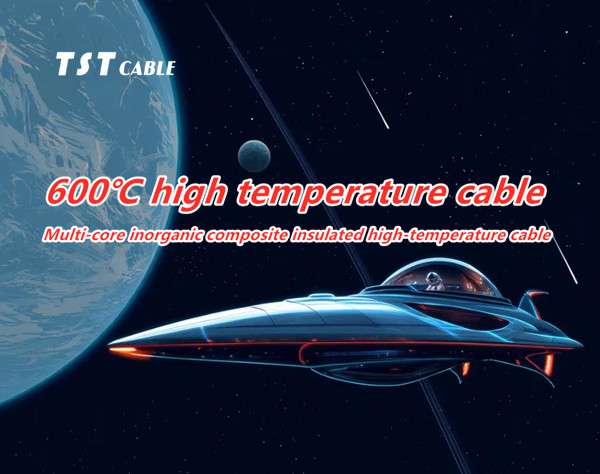
As a high-speed train hurtles past at 350 kilometers per hour, its heart—the traction motor—spins at thousands of revolutions per minute. Connecting this power core are the high-temperature cables, known as the “nerve center.” Like the locomotive’s “blood vessels,” they precisely transmit electrical energy to the motor control unit, enduring extreme temperature swings of -40°C to +150°C, strong electromagnetic interference, and constant vibration. This is not only a victory for the cables, but also a pinnacle showdown of materials science and engineering ingenuity.
1. A “Life-or-Death Test” Under Extreme Operating Conditions
The operating environment of electric traction locomotives can be described as “hellish” and challenging:
High temperature and high pressure: When the traction motor is operating, the stator winding temperature can reach over 150°C, requiring cables to withstand these high temperatures for long periods without aging.
Strong electromagnetic interference: The high-frequency pulses (dv/dt > 5kV/μs) generated by the IGBT converter can easily induce partial discharge, threatening cable insulation.
Mechanical stress: Continuous vibration (frequency 5-200Hz) and bending (minimum bend radius <10 times the cable outer diameter) during train operation can cause material fatigue.
Fire safety: In the event of a fire in a tunnel or underground line, the cable must maintain circuit integrity in a 1000°C flame for 90 minutes.
Traditional PVC or XLPE cables are highly susceptible to insulation breakdown and outer sheath cracking under these conditions. High-temperature cables, with their “superpowers,” are the key to solving this problem.
2. Material Revolution: From “Fragile” to “Indestructible”
The core of TST CABLE high-temperature cable lies in material innovation. Its “armor” is composed of multiple layers of special materials:
(1) Conductor: Extreme conductivity of high-purity oxygen-free copper
The traction motor control cable uses 99.99% pure oxygen-free copper conductor with a resistivity as low as 0.01724Ω·mm²/m, ensuring that the temperature rise is controlled within 50K when transmitting large currents (up to 2000A). More importantly, its grain structure has been specially treated to improve fatigue resistance by 30%, and it remains flexible even at low temperatures of -40℃. (2) Insulation layer: “Triple protection” of high-temperature resistant materials
The first layer: Silicone rubber (VMQ) – temperature range of -60℃ to +200℃, volume resistivity >10¹⁵Ω·cm, still maintains elasticity at high temperatures, and tear strength of 15MPa;
The second layer: Polyimide film (PI) – temperature resistance up to 400℃, dielectric strength >20kV/mm, serving as the main insulation layer for motor winding leads;
The third layer: Ceramic silicone rubber – automatically transforms into a hard ceramic shell in the event of a fire (>800℃), maintaining circuit integrity and meeting IEC 60331 standards.
For example, the “Fuxing” traction motor lead developed by TST CABLE uses silicone rubber + polyimide composite insulation, passed the 1000-hour thermal aging test (150℃), and the insulation resistance drop rate is <10%.
(3) Shielding layer: “Terminator” of electromagnetic interference
The IGBT switching frequency in the traction system is as high as 4kHz, generating strong electromagnetic radiation. The high-temperature cable utilizes a “double shield” design:
Inner shield: A semiconductor extruded layer (resistivity <100Ω·cm) provides uniform electric field distribution and suppresses partial discharge;
Outer shield: A copper wire braid + aluminum foil composite layer with a shielding efficiency >95%, ensuring that control signals (such as encoder feedback) are not interfered with.
In actual measurements on a CR400AF EMU, this shielding structure reduced electromagnetic radiation intensity from 80dBμV/m to 45dBμV/m, fully complying with the EN 50121-3-2 standard. (4) Sheath layer: the ultimate line of defense for wear resistance and flame retardancy
The outer sheath is made of cross-linked polyolefin (XLPO) or fluoroplastic (FEP), with the following features:
Abrasion resistance: passed 5000 scraping tests (5N force), with sheath thickness loss <0.1mm;
Flame retardancy: oxygen index >32%, no halogen acid gas released during combustion, in compliance with EN 45545-2 HL3 grade;
Oil resistance: after immersion in 100℃ transformer oil for 72 hours, mechanical property retention rate >80%.
3. TST CABLE Rail Transit Cable Practical Application: Evolution from “Harmony” to “Fuxing”
(1) “Golden Connection” between Traction Converter and Motor
In the “Fuxing” EMU, TST CABLE high-temperature cable is responsible for the main circuit connection between the converter and the traction motor. Its structure is as follows: Main power line: 3×150mm² oxygen-free copper conductor + silicone rubber insulation, transmitting 1500V DC/1200A current; Control harness: multi-core double-shielded cable (including encoder and temperature sensor signal lines), minimum wire diameter 0.5mm²; Integrated design: using “power-control integration” composite cable, the outer diameter is reduced by 30%, which is convenient for wiring. This design shortens the motor response time to 10ms, which is 40% higher than the traditional solution. (2) The “life and death line” of the motor winding lead wire The lead wire inside the motor is directly exposed to high temperature and vibration. A certain type of permanent magnet synchronous motor adopts: Flat design: ribbon cable with a cross-section of 2mm×10mm, the heat dissipation area is increased by 50%; Corona resistant coating: nano zinc oxide is coated on the surface of the insulation layer to inhibit corona corrosion and extend the service life to 30 years; Prestressed installation: 2% expansion margin is reserved to avoid loose joints caused by thermal expansion and contraction. During 300,000 kilometers of operational testing, the lead wires experienced no breakage or insulation failure.
4. Future Trend: Integration of Intelligent and Superconducting Technologies
As rail transit evolves toward intelligentization, TST CABLE high-temperature cables are moving toward integrated “sensing + transmission”:
Embedded Sensors: Fiber-optic temperature sensors (DTS) or strain gauges are integrated within the TST CABLE cable sheath for real-time temperature and mechanical stress monitoring.
Superconducting Cable Applications: Cables based on YBCO high-temperature superconducting material (operating at 77K) can carry up to 10 times the current of traditional cables. 10kV/10kA transmission has been achieved in the laboratory and may be used in next-generation maglev trains.
As TST CABLE experts say, “The innovation of a single cable can potentially change the energy efficiency boundaries of an entire traction system.” In unseen corners, TST CABLE high-temperature cables, through their material body, are supporting the legendary “speed and safety” of the world’s high-speed rail.
Also available in:
English





